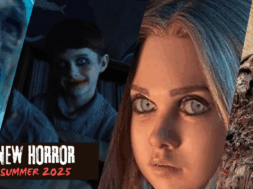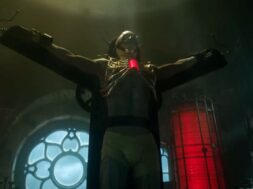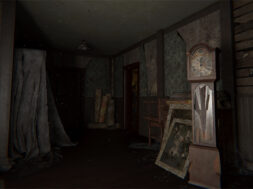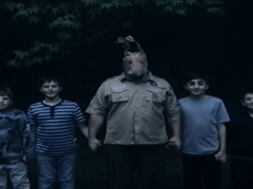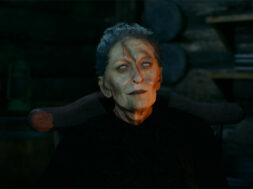‘Tone-Deaf’ Director Richard Bates Jr. on His Social Slasher That Demands to Be Heard! [SXSW]
This weekend, Richard Bates Jr., director of Excision, Suburban Gothic and Trash Fire, will see his horror-thriller Tone-Deaf hold its World Premiere at the ongoing SXSW Film Festival.
Bloody Disgusting talks to Bates Jr. about the film that follows millennial Olive (Amanda Crew) who, after losing her job and imploding her latest dysfunctional relationship, leaves the city for a weekend of peace in the country, only to discover the shockingly dark underbelly of rural America.
“Tone-Deaf was initially inspired by Norman Rockwell’s painting, The Connoisseur, which many believe sets out to satirize the artwork of Jackson Pollock,” Bates Jr. reveals in an exclusive pre-SXSW interview. “A gentleman wearing traditional business attire stands alone, inside an art gallery, staring off into a void of abstract expressionism. But the closer this director looks, the more I see a portrait of a frightened and confused old man at odds with modernization.”
In the film, Amanda Crew’s Olive rents an eccentric, ornate country house from Harvey (Robert Patrick), an old-fashioned widower who’s struggling to hide his psychopathic tendencies.
“With Harvey, the most important thing from the script stage onward was not to give him some specific motivation, directly interwoven into the mechanics of the plot,” he explains. “I wanted to make it entirely character-based, without a practical sense of purpose that’s easy to wrap your head around. Hate and anger are interwoven into the fabric of who Harvey is, quietly festering inside him for many years as a result of the values impressed upon him during the time in which he was raised. At a point of desperation, these repressed emotions rise to the surface and result in him bringing to life a “John Wayne fantasy” from childhood – his own distorted spin on the archetypal “last stand.”
Furthering the background of the antagonist, Bates Jr. says he’d “call it a Trump era film,” while further explaining:
“Harvey hates the youth generation for being self-obsessed, but it’s his preoccupation with him himself and his place in the world that leads to his unraveling.
“Olive wants to live in a better world but she’s not really doing anything about it,” he added. Harvey’s plans backfire by giving her the ultimate growing experience – opening her eyes to horrific realities she’s only seen or read about from behind the safety of a screen.
“Olive exists in her own personal hell but doesn’t fully realize she’s in a horror movie until the third act.
“And like so many others her initial response is one of disillusionment… until she decides to do something about it. Olive reaches the conclusion that it’s time for Harvey to get outta the way and stop hogging the screen – this is her story moving forward.”
Bates Jr. adds this interesting bit: “I made a concentrated effort to show the hypocritical aspects of both the hero and villain – even poking fun at myself. We’re all hypocrites in one form or another.”
Harvey is meant to be a villain that’s representative of the times, Bates Jr. continues: “Tone-Deaf is the first time I’ve directly broken the wall, making the audience a part of the movie. In the digital age, everyone has a platform – it made sense to me that the characters should have one too. I really wanted to make Harvey a villain representative of the times, forcing his beliefs and opinions on the viewer. He demands to be heard!”
As for what genre Tone-Deaf touches, he’d call it a slasher as “most all of my horror references were slasher films.” He explains how it all ties to what he hopes viewers take away from the film.
“Whereas my previous films deal with very distinct characters and the details of their emotional traumas, with Tone-Deaf I felt it necessary to take a different approach. Fascinated by the troubling times in which we live, and how they’ll be perceived in the context of history, I decided to take a broader, more observational approach. And in doing so, the film serves dual purposes.
“First and foremost, the film exists to entertain and provide social catharsis for modern viewers. I created a heightened reality in order to hold a magnifying glass up to various aspects of the current generational divide, while still providing a sense of midnight movie escapism.
“Secondly, the movie exists as a cultural artifact – something to be re-discovered and gain perspective from, as it relates to a small but important piece of a much larger puzzle.”
Tone-Deaf premieres this Sunday at SXSW and will be released by Saban Films later this year.




